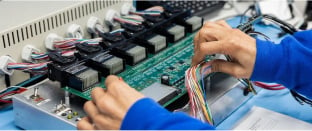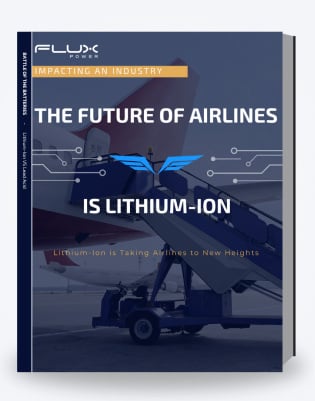MODEX 2022 took place in Atlanta, GA this year and brought together over 800 exhibitors and more than 30,000 attendees. The Georgia World Congress Center was packed with exhibitors and attendees from companies that operate warehouses, and distribution centers from all over the world who are looking to learn more about different solutions that can benefit their operations. With over 150 educational seminars about new technological advancements and trends in the industry, these attendees had the opportunity to learn through this channel about new ideas from thought leaders in the material handling industry.
This blog will discuss the top 3 trends that were observed at MODEX 2022.
- Labor and supply chain issues are all around
For the past two years, COVID-19 has disrupted supply chain operations, causing both material and labor shortages. Because of these supply chain disruptions, businesses need to implement solutions to overcome issues like the unavailability of components or longer lead times. Material shortages have led to many companies introducing longer lead times (i.e., some forklift OEMs are currently taking orders for 2023 delivery).
Companies that are agile, can act quickly, and plan for their needs will be able to better deal with longer lead times. Companies that don’t have the foresight to plan ahead will be punished with even longer delivery times.
- Warehouse automation is taking over the game
There were over 20 automation businesses that exhibited at the show. As stated before, supply chain disruptions are causing businesses to reevaluate their operations and think outside the box. It’s difficult for a company to change the labor shortages, but they can invest in new automation products like AGV and AMR solutions that reduce the amount of labor needed to operate.
Within automation, there are 3 main types of AMRs:
- Autonomous inventory robots – These are robots that shuttle products from one place to another with no lifting capabilities.
- Self-driving forklifts – These mobile robots take the shape of lift trucks and can detect obstacles and adjust course. Automated forklifts are completely driverless and can transport products where they are needed in the warehouse.
- Shared Autonomy – These are mostly autonomous but do allow operators to control highly specialized processes. An example of shared autonomy can be seen below with this Third Wave Automation and CLARK AMR.
.jpg?width=329&name=CLARK%20(2).jpg)
- Lithium-ion battery partnerships are key
As the lithium-ion battery industry grows, more and more suppliers are developing and selling different products. Each of these forklift battery manufacturers offers different value propositions. In previous years, the primary question that was asked was, “What is the difference between lead acid and lithium-ion batteries?” As lithium-ion technology has become more accepted, customers now want to know what are the differences between lithium-ion battery manufacturers.
Some of the considerations customers should evaluate about a possible lithium-ion battery supplier:
- Is the battery approved for use by the forklift OEM? - Many OEMs require lithium-ion battery manufacturers to go through approvals to ensure the battery pack will integrate with their forklift. If a lithium-ion battery pack is not approved by the OEM, you can invalidate the forklift warranty by using an unapproved battery.
- Is the battery UL Listed? - A UL Listing provides confidence from a trusted 3rd-party that the lithium-ion battery meets safety requirements. The lithium-ion battery will go through different types of testing such as, drop testing, fire testing, and water testing to ensure that the battery is not hazardous in any situation that might happen in any operation.
There are many lithium-ion battery manufacturers out there and choosing the one that can educate and walk with you every step of the way will help you get the best return on investment for your operations.












